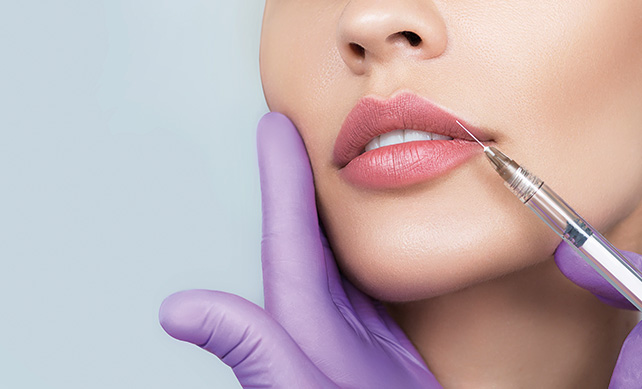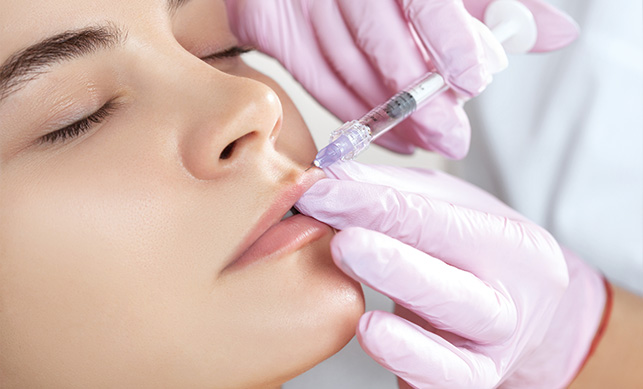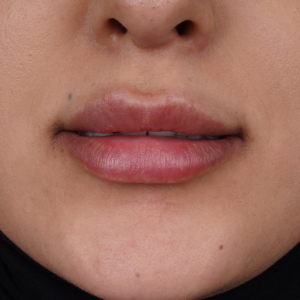Filler
What Are The Fillers Injections
Filler injections are non-surgical cosmetic procedures that are injected under the skin for many reasons, such as restoring volume and reducing facial wrinkles, sagging, and fine lines. There are several types of dermal fillers in the cosmetic industry. They serve different purposes; thus, which one you will choose entirely depends on your preferences and the doctor’s recommendations. Almost all fillers contain natural and synthetic materials that treat the volume loss at the injection site. Dermal fillers can be used in many areas for different reasons, but the most popular areas are;
- Lip Filler Injection: Injections into the lips, also known as lip augmentation. They create a plumb and fuller look.
- Fillers For Cheek: These injections are made on the cheekbones to add volume to the face.
- Fillers For Chin: Getting fillers on the chin sharpens the facial features.
- Nose Fillers: Fillers are also a way to shape the nose without surgery.
- Reducing The Scar Appearance: Scars may cause uneven textures on the skin. These areas can be improved with the filler treatment.
- Wrinkle Treatment: Fillers are great ways to reduce wrinkles. They are specially used for forehead lines and nasolabial folds, also known as smile lines.
Types Of Fillers
There are several types of dermal fillers. Some of them are as follows;
- Calcium Hydroxylapatite Fillers: A filler that lasts for a long time but is not permanent and is very biocompatible with human tissue.
- Hyaluronic Acid Fillers: It is a component that naturally occurs in the human body and is used as a temporary dermal filler.
- Poly L Lactic Acid fillers: It is a plant-based, semi-permanent dermal filler that stimulates collagen production.
Dermal fillers are mostly preferred because of their fast and efficient results. There are three types of fillers:
- Temporary Fillers: These are the most common types of fillers. These fillers consist of substances that dissolve in the skin. Hyaluronic acid-based, or calcium hydroxide-based fillers are some examples of temporary fillers. If you want to maintain the effects of these fillers, you may need to get secondary injections after about a year.
- Semi-permanent Fillers: These fillers are more durable compared to temporary fillers. It takes more time for semi-permanent fillers to dissolve under the skin. Although they might require a touch-up now and again, they typically last between 12 and 18 months. Poly L Lactic Acid fillers are examples of these filler types.
- Permanent Fillers: Unlike the other fillers, these fillers consist of substances that do not dissolve under the skin. They are often injected into the skin’s thicker areas, such as nasolabial folds. Permanent fillers can last up to 5 years or more. However, although they seem like the best option, they may have some moderate to severe facial side effects.
Everything is to assure you that you are in safe hands…
Candidates For Filler Injection
Many people, both men and women, can undergo filler injections. They are as follows:
- Those who suffer from wrinkles and fine lines.
- Those who wish to augment the lips.
- Those who want to reshape their nose without plastic surgery.
- Those who are in their mid-thirties and have signs of aging on their faces.
- Those who suffer from a pale face and want to add volume to it.
Pre-Filler Injection Instruction
There are a few simple tips that must be followed before undergoing filler injection, that is summarized as follows:
- Carry out specific skin tests to make sure that your skin can undergo a filler injection.
- Refrain from smoking for a week before the filler injection.
- Inform your doctor about your medical history and the medications you are using.
- Stop having medications that cause thinning in the blood and anti-inflammatories.
- Refrain from having multivitamins since they contain vitamin E for two weeks before the filler injection.
- Carry out allergy tests to make sure that you do not have any allergic reaction to the materials used in the filler injection.
- Inform your doctor about the desired results that you are expecting from the filler injection.
Post-Filler Injection Tips
After the filler injection operation, the patient must follow all the instructions and advice that the doctor dictates. These instructions are as follows:
- Keep your head in a vertical position as much as possible, and avoid tilting it for two hours after the filler injection. Ensure not to touch the areas that were injected with filler for 12 hours after the procedure.
- Refrain from sunlight or extreme heat for 24 hours after the filler injection.
- Refrain from forceful facial movements, and move your face with extreme caution.
- Refrain from smoking for two weeks after the filler injection.
- Refrain from any effort as much as possible, and it is recommended that you adhere to complete rest for at least two days after the injection.
Stages Of Filler Injection
Filler injections are conducted through a few simple stages:
- First Stage: Clinical Examination — The doctor examines the patient’s face and identifies the areas to be treated by filler injection.
- Second Stage: Conducting the Necessary Tests — The necessary skin and blood tests are carried out to make sure that the patient is free from diseases that may hinder the filler injection procedure.
- Third Stage: Applying Local Anesthetic — Most of the time, an anesthetic cream is applied to the injection areas to provide maximum comfort and minimum pain.
- Fourth Stage: Injection — The doctor injects the filler carefully into the areas to be treated, using very fine needles.
The person notices the initial results of the filler injection immediately after the session. The final results would be obtained within three to seven days.
Before - After Gallery
Take a look at the outstanding results of our previous Medical Cosmetic patients, then decide for yourself.
FAQ
Do fillings hurt with an injection?
Fillings may cause discomfort or pain during the injection of local anesthesia. However, once the area is numb, patients should not feel any pain during the actual filling procedure.
How much do filler injections cost?
The cost of filler injections can vary depending on several factors such as the type of filler used, the amount injected, and the location. In the United States, the average cost of filler injections ranges from $500 to $2,000 per syringe.
What not to do before filler injections?
Before getting filler injections, it is recommended to avoid consuming alcohol, blood-thinning medications, and aspirin for at least 24 hours to minimize the risk of bleeding, bruising, or swelling.
Are filler injections safe?
Fillers are generally considered safe when administered by a qualified and experienced practitioner. However, as with any medical procedure, there is a risk of potential complications such as infection, allergic reactions, and tissue damage.




BLOG & NEWS
BLOG
Which Breast Augmentation Implant Is the Best?
see all

NEWS
TURKEYANA REDEFINING THE CONCEPT OF BEAUTY
see all




















































